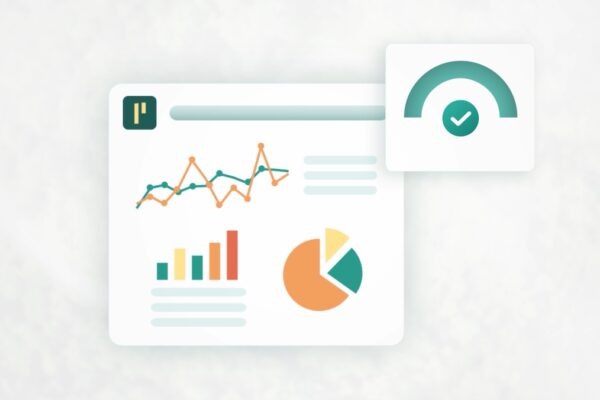ESG Data Management Software
ESG Data Management: Why Long-Term Control Matters More Than Ever
In recent months, EU sustainability regulations such as the Corporate Sustainability Reporting Directive (CSRD) and the Corporate Sustainability Due Diligence Directive (CSDDD) have undergone timeline changes through the “Omnibus I” simplification package. While this brings a temporary sigh of relief for many companies, it also raises an essential strategic question:
How do we ensure that ESG data remains accessible, accurate, and actionable—regardless of shifting deadlines?
That’s where robust ESG data management—and the right ESG data management software—becomes essential. Regulatory environments may evolve, but stakeholders—from investors to clients to employees—will continue demanding transparency, consistency, and measurable progress.
ESG Data Management Software: The Backbone of Responsible Business
Modern ESG data management software has evolved far beyond simple spreadsheet tracking. It acts as a central nervous system for gathering, verifying, and interpreting ESG-related information from across an organization. From emissions and energy consumption to diversity metrics and supplier screening, the data landscape is vast and ever-expanding.
Using software specifically designed for ESG needs offers several advantages:
- Centralization: All ESG-related data is collected and stored in one place, removing silos between departments.
- Data Integrity: Version control, user permissions, and validation rules ensure accuracy.
- Automation: Reminders, workflows, and integrations streamline data collection and reduce manual effort.
- Audit-readiness: A good ESG platform leaves a digital trail for every update and change—critical for audits or external verification.
The right ESG software supports not only compliance but also better internal decision-making.
ESG Data Management & Reporting: Prepare for Any Format, Any Time
Reporting is often the most visible part of ESG performance, but without proper data infrastructure, reporting becomes chaotic and reactive.
With structured ESG data management & reporting, you can generate reports aligned with multiple frameworks:
- CSRD (EU)
- GRI (Global Reporting Initiative)
- SASB (Sustainability Accounting Standards Board)
- TCFD (Task Force on Climate-related Financial Disclosures)
- UN SDGs (Sustainable Development Goals)
Organizations that manage ESG data effectively can respond swiftly to evolving reporting requirements. Instead of scrambling to find numbers, they can focus on interpreting trends and improving performance.
For example, when CSRD requirements were delayed, some businesses paused preparation. Those with integrated ESG data systems simply adjusted their reporting timelines, without losing momentum.
ESG Data Management & Analysis: Move From Metrics to Meaning
Data without analysis is just noise. With proper ESG data management & analysis, organizations can unlock value in several key ways:
- Trend Analysis: Understand year-over-year progress in key areas like carbon intensity or employee retention.
- Benchmarking: Compare performance against industry peers or ESG index standards.
- Scenario Modeling: Simulate the impact of changes (e.g., switching to renewable energy) on emissions and reporting scores.
- Strategic Alignment: Identify where ESG outcomes align or conflict with core business objectives.
Strong analysis doesn’t just improve ESG performance—it supports informed decisions across the business.
Data-Driven ESG Risk Management: Anticipate, Don’t React
Data-driven ESG risk management empowers businesses to foresee issues before they escalate.
Risks can emerge from:
- Environmental: Climate change, pollution, biodiversity loss
- Social: Labor practices, DEI gaps, community impact
- Governance: Board composition, ethics breaches, supplier risk
Having a live, integrated ESG data model helps to:
- Monitor leading indicators
- Conduct risk assessments based on real-time inputs
- Correlate ESG issues with financial performance
- Communicate clearly with stakeholders
When ESG data is fragmented, risks are invisible. When it’s centralized and structured, they become manageable.
ESG Data Management Solution: What to Look for
A flexible ESG data management solution should adapt to evolving regulatory environments while supporting internal sustainability goals. Key capabilities include:
- Customizable Frameworks: Adapt to CSRD, GRI, SASB, or internal standards
- Role-Based Access: Define who can view, edit, or approve data
- Integrated Dashboards: Visualize key ESG metrics in real-time
- Version History: Keep track of all changes and contributors
- Export Flexibility: Output to any reporting format, regulator or internal need
It should also connect with other enterprise systems:
- Financial ERP platforms
- HR systems
- Procurement and supply chain databases
The goal isn’t to replace core business systems, but to enrich them with ESG context.
The Strategic Value of Long-Term ESG Data Management
Regulations can change, but data governance is here to stay. Companies that see ESG reporting as a yearly burden often miss the larger value:
- Operational Efficiency: Integrated data reduces duplicated efforts.
- Transparency: Verifiable data builds stakeholder confidence.
- Resilience: Structured data enables faster adaptation to new requirements.
Long-term ESG data management helps organizations stay grounded, even when external pressures shift.
Conclusion: Build a Foundation That Lasts
The EU’s shifting timelines show that regulatory landscapes are in flux. What remains constant is the need for organized, transparent, and useful ESG data.
Investing in systems and processes that centralize, secure, and interpret that data isn’t just about compliance—it’s about readiness. Whether for internal decision-making, stakeholder communication, or future reporting, strong ESG data practices provide the foundation for whatever comes next.
Now is the perfect time to lay that foundation.
Start your free trial today and discover how effortless ESG reporting can be with the latest technology at your fingertips.


